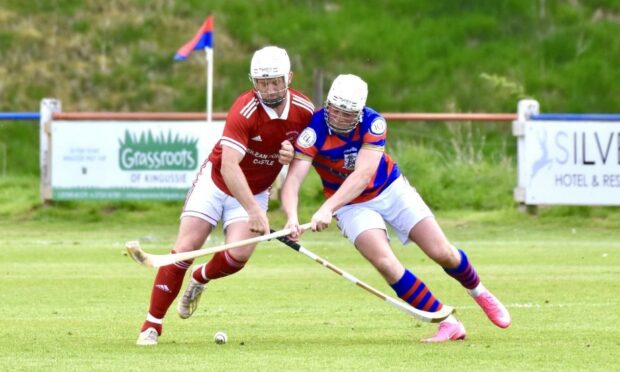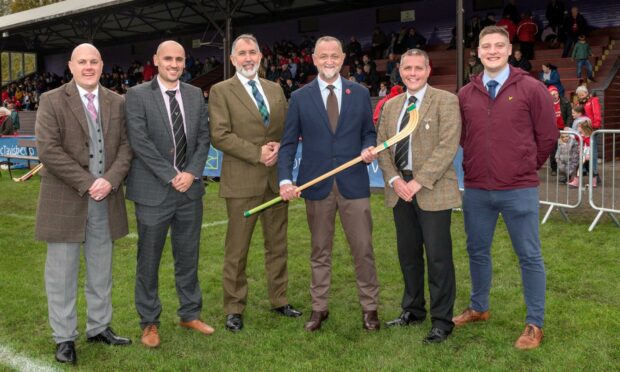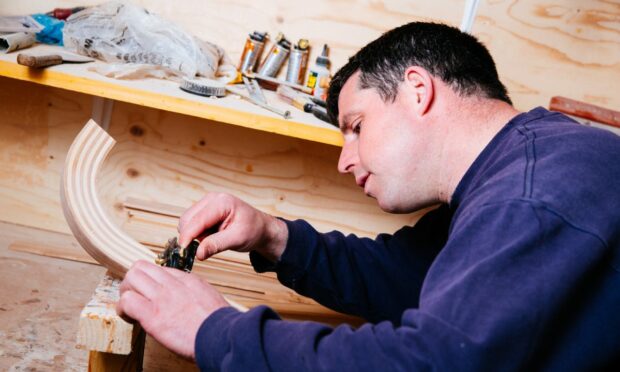Shinty’s traditional and critically-endangered art of caman making has been thrown a lifeline.
A new project has been launched to secure the future production of camans – the wooden sticks used by players – and the future sustainability of the sport.
Camans are made by a dwindling number of specialist independent carpenters.
Two years ago, the Heritage Crafts Association added the tradition to its Red List of Endangered Crafts, saying it is on the verge of extinction.
Camans vital part of shinty
Now, shinty’s governing body the Camanachd Association is working with Inverness College UHI to develop a manufacturers’ cooperative to tackle the issue.
The five-month initiative is receiving funding from the Scottish Government’s voucher scheme which encourages collaborations between organisations, businesses and academia.
Business and management lecturer David Jack is leading the project at Inverness College UHI.
He says: “Shinty is one of Scotland’s most ancient and historically significant sports and camans are a vital part of the game.
“As caman-making is a critically endangered craft, the Camanachd Association is looking for innovative ways to make the manufacturing process more sustainable.
“Our main goal will be to support caman makers to work together so they can share expertise, ideas and realise the benefits of greater cooperation.”
The project is part of a wider collaboration between the association and the University of the Highlands and Islands.
The organisations have signed a memorandum of understanding to explore opportunities around volunteering, work experience, education and training, coaching and community awareness.
Shinty the ‘cornerstone’ of many communities
Derek Keir, the association’s chief executive, said: “This project is a fantastic example of our partnership plans with the university and highlights the benefits of partnership working to grow the support network for shinty and our respective communities.
“Shinty is the cornerstone of many Highland communities and the caman-making support project is just one way that our communities are going to be able to reap the benefits of our new academic partnership with the university.
“Moving forward we also hope to progress work to include further exchange of expertise as well as a greater connection to teacher training in the Highlands and Islands.”
Shinty commentator and historian Hugh Dan Maclennan says the project is vital progress in a crucial area for the game’s future.
“A resilient and economic production process for the making of camans is crucial to the sustainability, continuation and supply of shinty at all levels,” he said.
“The quality of the playing equipment and its availability at an affordable price has historically been an issue which required a longer-term solution rather than just leaving it to individuals who could not make it a full-time occupation.
“The expertise already exists and is invaluable in terms of the study.
“What needs to be done is to find a way of making the operation viable and sustainable so that as the game grows and this development is not held back by the availability or otherwise of the basic equipment.”
Shinty important to area’s culture and heritage
Dr MacLennan says attention should also be given to the supply and quality of shinty balls.
“I also hope that this signals a burgeoning involvement of the university in matters camanachd as, for too long, the sport has not been on the collegiate and academic radar.
“It really deserves to be, given the importance of the game to the area UHI represents linguistically, environmentally and in terms of the culture and heritage which is involved.”
Alan MacPherson, who runs Inverness-based Tanera Camans, adds: “Action to support caman manufacturers is long overdue.
“But it remains to be seen whether this will translate into concrete changes that will address the issues we face.
“What would make a true impact is a proper college apprenticeship scheme that would provide young people the opportunity to learn the craft whilst helping us meet demand.
“I entered into this full time in 2014 and the problems faced then are still apparent today, if not worse.”
He said at the time there were four companies producing camans, now his is the only firm actively producing the sticks in Scotland.
Before lockdown he was producing 1,200-1,300 camans per year, thought to be around 80% of all camans produced.
Related stories



